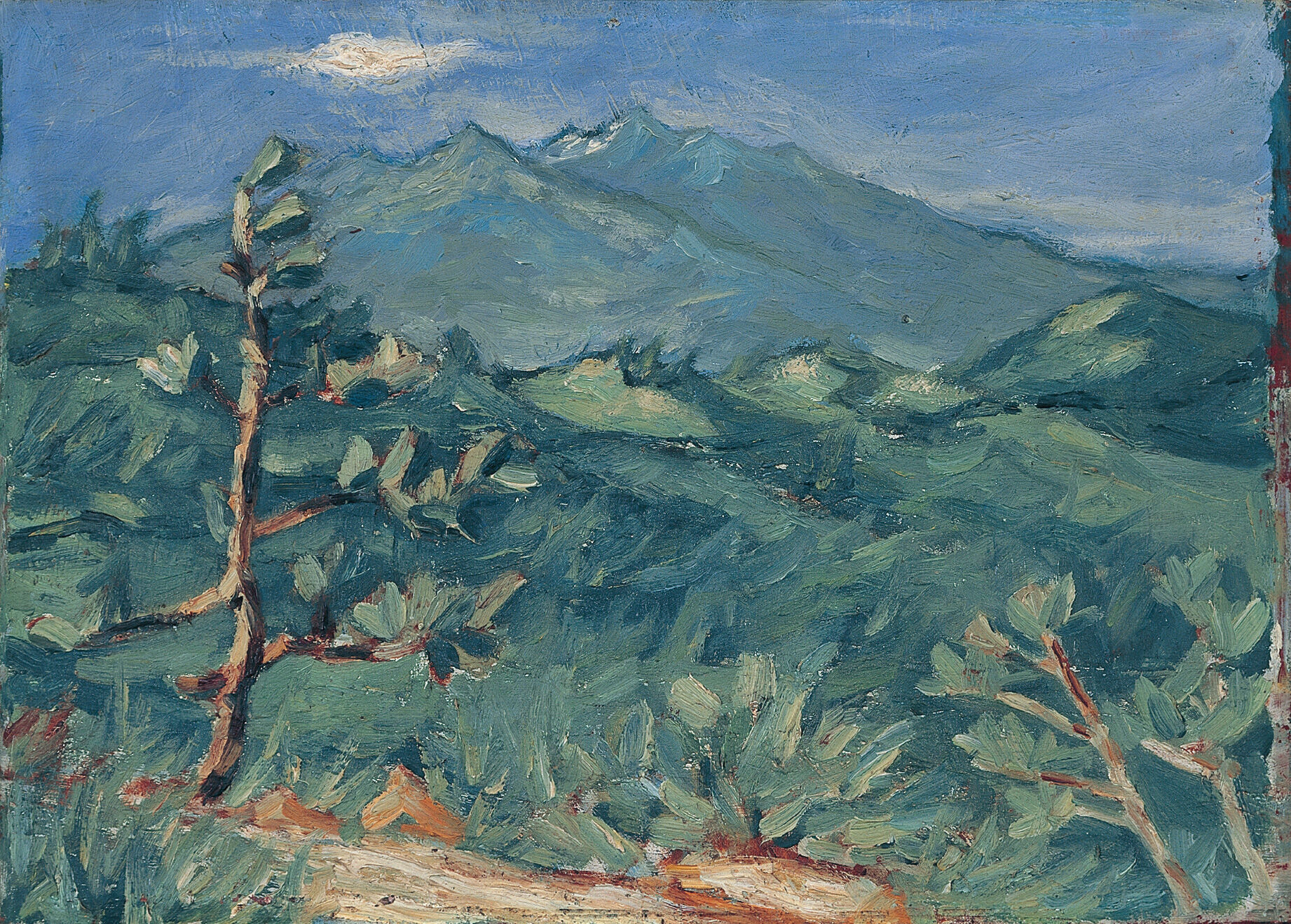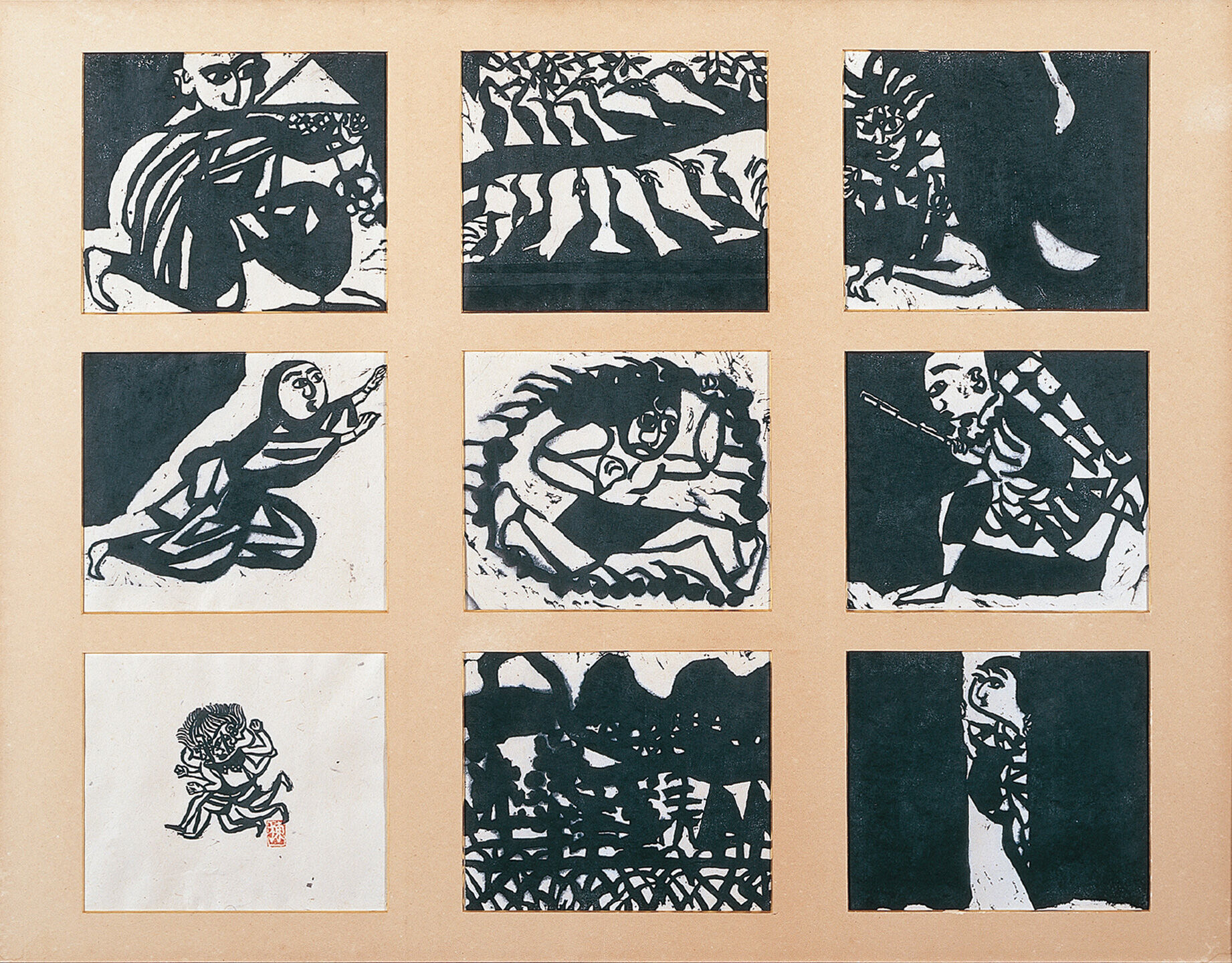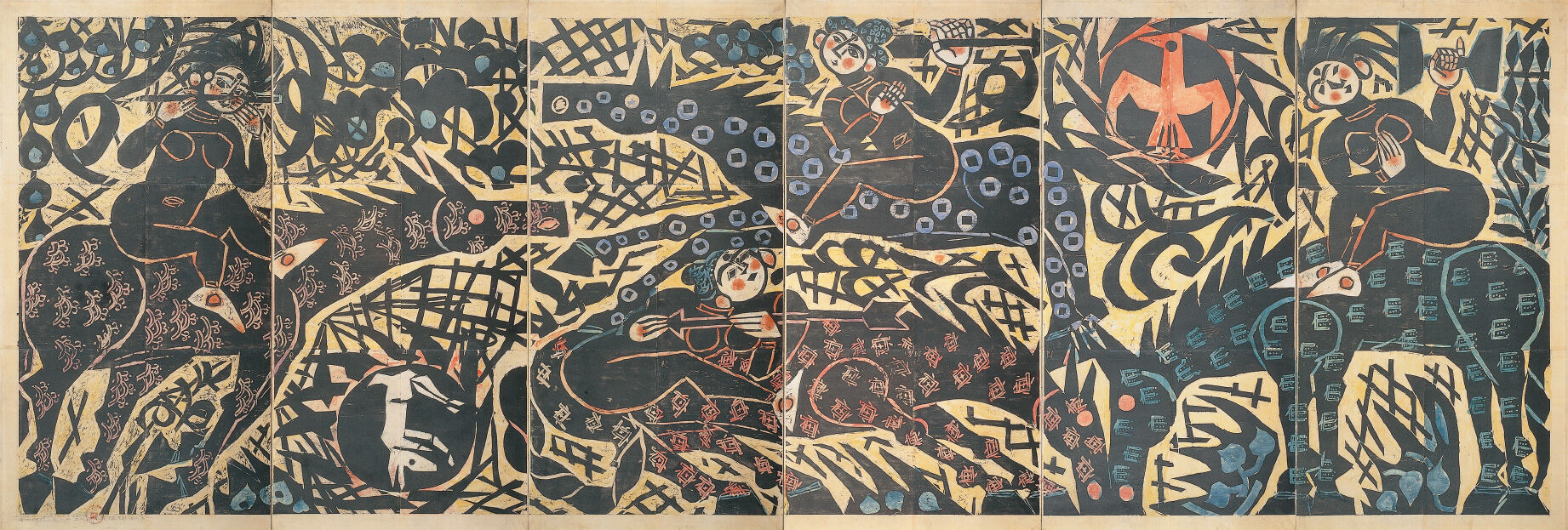MUNAKATA Shiko[1903-1975]
MUNAKATA Shiko was born in 1903 in Aomori City as the third son of a blacksmith. He was interested in art from an early age and learned oil painting almost completely by himself. After seeing a Van Gogh sunflower painting in the literary magazine Shirakaba at the age of 18, he was inspired to become a professional oil painter and formed an art group with his friends MATSUKI Manshi, TAKAYAMA Uichi, and KOTO Masao. Munakata held exhibitions with the other members of the group while continuing to study painting. He moved to Tokyo in 1924 and submitted works to the annual exhibitions of the Imperial Fine Arts Academy but was rejected repeatedly. His painting “At the Foot of the Hakkoda Mountains,” which reflects his study of Cezanne and other post-impressionists, is from this period. On the other hand, it was around this time that he encountered KAWAKAMI Sumio’s print “Early Summer Breeze” displayed at an exhibition, which inspired him to begin producing woodcuts. In 1928, his works were accepted to the exhibition of the Japan Print Association, his first successful submission to a major exhibition. Also in that same year, he finally had a work accepted to the Imperial Fine Arts Exhibition, his oil painting “Garden.”
As exemplified by “Bride of the Zodiac,” Munakata’s prints from this period strongly showed the influence of KAWAKAMI Sumio. However, Munakata later discovered his own unique monochromatic style, producing outstanding works such as “Flowering Branches” in 1933 and “The Life of Prince Yamato Takeru” in 1936. “The Life of Prince Yamato Takeru” in particular caught the eye of the potter HAMADA Shoji when it was displayed at the eleventh annual exhibition of the Kokugakai Society, and it was through him that Munakata became acquainted with the philosopher YANAGI Soetsu, founder of the mingei (folk art) movement. Munakata went on to further solidify his distinctive style through interaction with other artists in the movement while enriching his knowledge of Buddhism and classical literature. In 1938, his print series “The Story of the Plover” based on the Noh play Uto (Birds of Sorrow) won a special prize at the second New Ministry of Education Fine Arts Exhibition. This made it the first print work to win an award at a government-sponsored exhibition, a historic feat. Munakata published his masterwork “Two Bodhisattva and Ten Great Disciples of Shakyamuni” in the following year. In 1942, he began to refer to his woodblock prints in writing using the Japanese character for “board” rather than that for “printing.” In this way, he distinguished himself from other artists in the sosaku-hanga (creative prints) movement by emphasizing the woodblock material itself over the process.
Although he remained in Tokyo during most of World War II, he evacuated to the town of Fukumitsu (now Nanto City) in Toyama Prefecture in April 1945, just before the end of the war. In May of that year, his house in Tokyo burned down in an air raid, resulting in the destruction of nearly all of his woodblocks. He remained in Fukumitsu until 1951. He began to achieve international recognition during the postwar period, winning the first prize in the print category at the third São Paulo Art Biennial in 1955 as well as the grand prize in the international print category at the twenty-eighth Venice Biennale in 1956. In 1959, he traveled to the United States for the first time at the invitation of the Rockefeller Foundation and the Japan Society and stayed there for about nine months, holding solo exhibitions all over the country and lecturing on his printmaking techniques at universities. During this time, he also made a side trip to Europe and visited museums throughout the continent.
Around 1960, his eye trouble began to worsen, and he lost almost all sight in his left eye. Nonetheless, his creative activities continued unabated. In 1961, he produced the enormous seven-meter-wide print “Flower Arrow” to commemorate the completion of a new building at the Aomori Prefectural Government Office, which was followed by other large-scale works such as “The Great World.” In 1970, he was awarded the Order of Culture by the Japanese government. In addition to woodblock prints, he also created impromptu Japanese-style paintings that he called Yamato-ga, which became greatly popular among the public.
In 1973, the Munakata Print Museum opened in Kamakura City. However, Munakata’s health deteriorated, and he was hospitalized in the following year. He died in May 1975 at his home in Tokyo. The Munakata Shiko Memorial Museum of Art opened in Aomori City in November of that same year.

≪At the Foot of the Mt.Hakkoda≫
1924
oil on board
23.5×33.0㎝

≪The Story of Plover≫
1938
woodblock on paper
各24.0×28.0㎝

≪Flower Arrow≫
1961
colored woodblock on paper
252.0×711.0㎝

